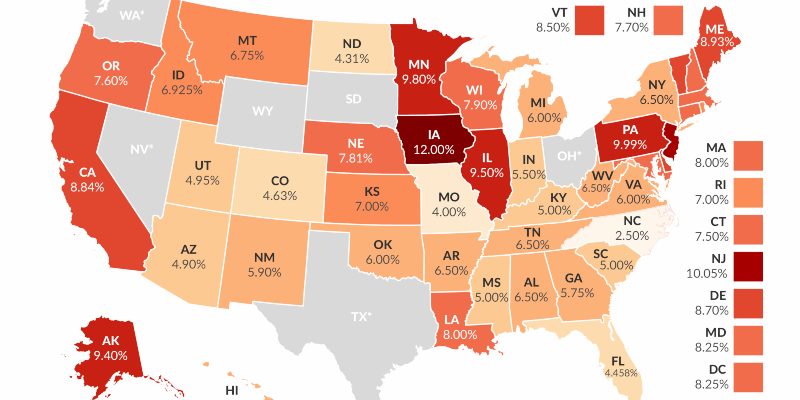IRS Publication 970 is an essential resource for taxpayers seeking to take advantage of education tax benefits. Whether you're a student, a parent, or an education professional, this publication provides comprehensive information on the various tax relief opportunities available for education-related expenses. By understanding and utilizing these benefits, taxpayers can significantly reduce their tax burdens and make higher education more affordable. The publication covers a wide array of topics, such as the American Opportunity Credit, the Lifetime Learning Credit, and deductions for student loan interest. This guide will help you navigate the complexities of IRS Publication 970, ensuring that you maximize the education tax benefits you're entitled to.
Eligibility Criteria
To determine if you qualify for the education tax benefits outlined in IRS Publication 970, it's essential to understand the specific eligibility criteria. Here are the main requirements:
- Enrollment Status: To be eligible for the American Opportunity Credit, you must be enrolled at least half-time in a program leading to a degree, certificate, or other recognized educational credential. This credit is available for the first four years of post-secondary education.
- Qualified Expenses: Eligible education expenses encompass tuition, fees, and other necessary costs associated with enrollment or attendance at an accredited educational institution. For the Lifetime Learning Credit, these expenses may also cover the cost of courses aimed at enhancing job skills.
- Modified Adjusted Gross Income (MAGI): Your eligibility for education tax benefits may depend on your Modified Adjusted Gross Income. For instance, the American Opportunity Credit has MAGI limits whereby the credit begins to phase out once your MAGI exceeds a certain threshold.
- Taxpayer Identification: Both you and the student (if different) must have a valid taxpayer identification number (TIN), typically a Social Security number, to claim education tax benefits.
Types of Education Tax Benefits
Understanding the different types of education tax benefits can help you choose the best options for your situation. Below are the main types of education tax benefits available.
American Opportunity Credit
The American Opportunity Credit is designed to help students and their families offset the costs of higher education. This credit can be claimed for the first four years of post-secondary education and offers up to $2,500 per eligible student. To qualify, you must be enrolled at least half-time in a program leading to a degree or other recognized educational credential. Additionally, 40% of the credit (up to $1,000) is refundable, meaning you can receive it even if you owe no tax.
Lifetime Learning Credit
The Lifetime Learning Credit offers up to $2,000 per tax return for eligible tuition and related expenses. Unlike the American Opportunity Credit, it can be claimed indefinitely, providing a valuable resource for ongoing education and skill enhancement. This credit applies to both undergraduate and graduate studies, as well as courses aimed at acquiring or improving job skills.
Student Loan Interest Deduction
The Student Loan Interest Deduction allows you to deduct up to $2,500 of interest paid on qualified student loans. This is an above-the-line deduction, meaning it can be taken even if you do not itemize your deductions. The deduction is subject to income limits, and the amount you can deduct may be reduced or eliminated if your Modified Adjusted Gross Income (MAGI) is above certain thresholds.
Qualified Tuition Programs (QTPs) or 529 Plans
Qualified Tuition Programs, commonly known as 529 plans, offer a tax-advantaged way to save for future education expenses. Contributions to a 529 plan grow tax-free, and withdrawals used for qualified education expenses are also tax-free. These plans can be used not only for higher education costs but also for K-12 tuition, making them a versatile savings option for families planning for their childrens education.
Education Savings Bond Program
The Education Savings Bond Program enables taxpayers to exclude the interest earned on Series EE and Series I savings bonds from their taxable income, provided these bonds are used to cover eligible higher education expenses. To be eligible, the bonds must be issued in the taxpayer's name and utilized for tuition and fees at qualified educational institutions. It's important to note that there are specific income limits, so verifying the current thresholds for eligibility is essential.
Claiming Education Credits
To claim education credits, you must complete and submit IRS Form 8863 alongside your federal income tax return. This form requires detailed information, including the student's enrollment status, the educational institution attended, and the total amount of qualified expenses paid. Before filling out the form, ensure that you have all necessary documentation, such as Form 1098-T from the educational institution, which reports the amount of tuition paid. It's also crucial to verify your Modified Adjusted Gross Income (MAGI) to determine eligibility for the credits.
After filling in all required information on Form 8863, transfer the calculated credit amount to your Form 1040. Keeping thorough records of your education expenses and related documentation will be vital in substantiating your claim, should the IRS request additional information. By accurately completing and submitting these forms, you can effectively reduce your tax liability and benefit financially from your investment in education.
Record Keeping Requirements

Keeping accurate records of your education expenses is crucial for claiming tax benefits and complying with IRS requirements. Here are the essential components:
- Receipts and Statements: Keep all receipts and statements from educational institutions that detail tuition payments, fees, and other qualified expenses. These documents serve as evidence of your payments and are necessary for accurately completing IRS Form 8863.
- Form 1098-T: This form is issued by your educational institution and indicates the amount of tuition paid during the year. Ensure you receive this form every year you pay tuition, as its a key document required by the IRS to substantiate your claim for education tax credits.
- Student Loan Interest Statements (Form 1098-E): If you are deducting student loan interest, retain Form 1098-E provided by your loan servicer. This form details the amount of interest paid on qualified student loans, which is needed to claim the student loan interest deduction.
- Records of Enrollment: Maintain documentation that verifies your enrollment status, such as copies of your course schedule, transcripts, or enrollment verification letters. This is particularly important for credits that require at least half-time enrollment, like the American Opportunity Credit.
- Qualified Education Expenses: Track and document all qualified education expenses, including books, supplies, and equipment required for your courses. This information will support your claim for various education tax benefits and ensure you receive the maximum credit available.
Conclusion
Taking full advantage of the available education tax benefits can significantly alleviate the financial burden associated with higher education. By understanding and utilizing credits such as the American Opportunity Credit, Lifetime Learning Credit, Student Loan Interest Deduction, and various savings programs, taxpayers can reduce their tax liability and maximize their savings. Accurate record-keeping and timely submission of required forms, such as IRS Form 8863 and Form 1098-T, are essential for claiming these benefits. Investing time in understanding these opportunities can result in substantial financial support, making education more accessible and affordable.




